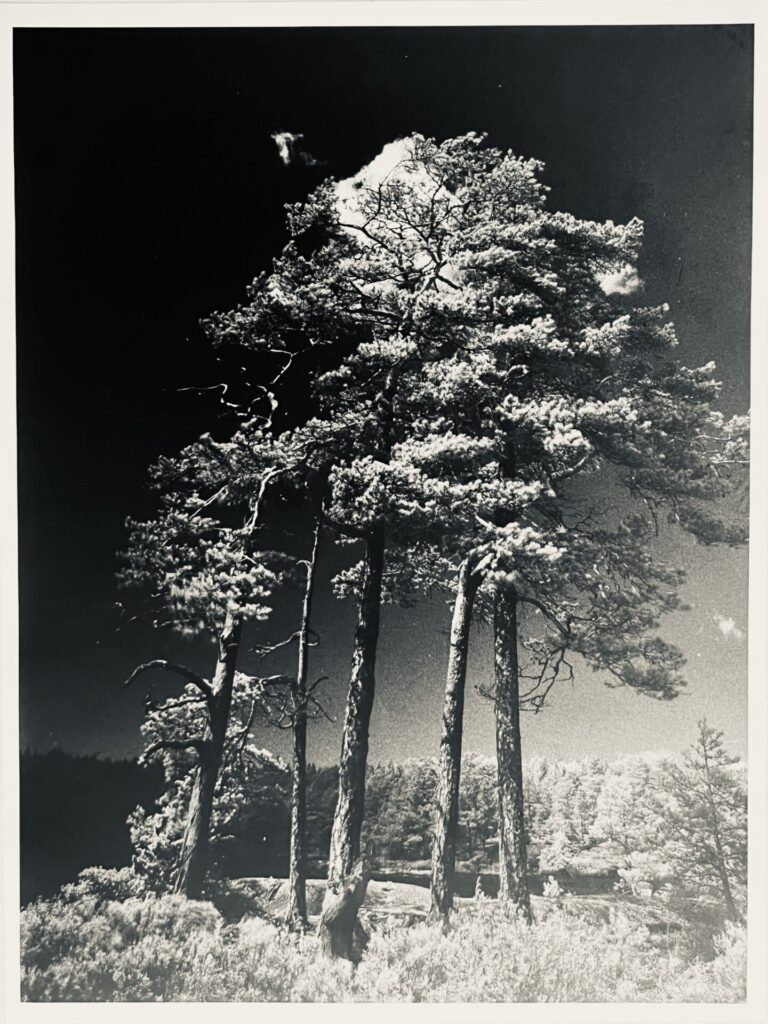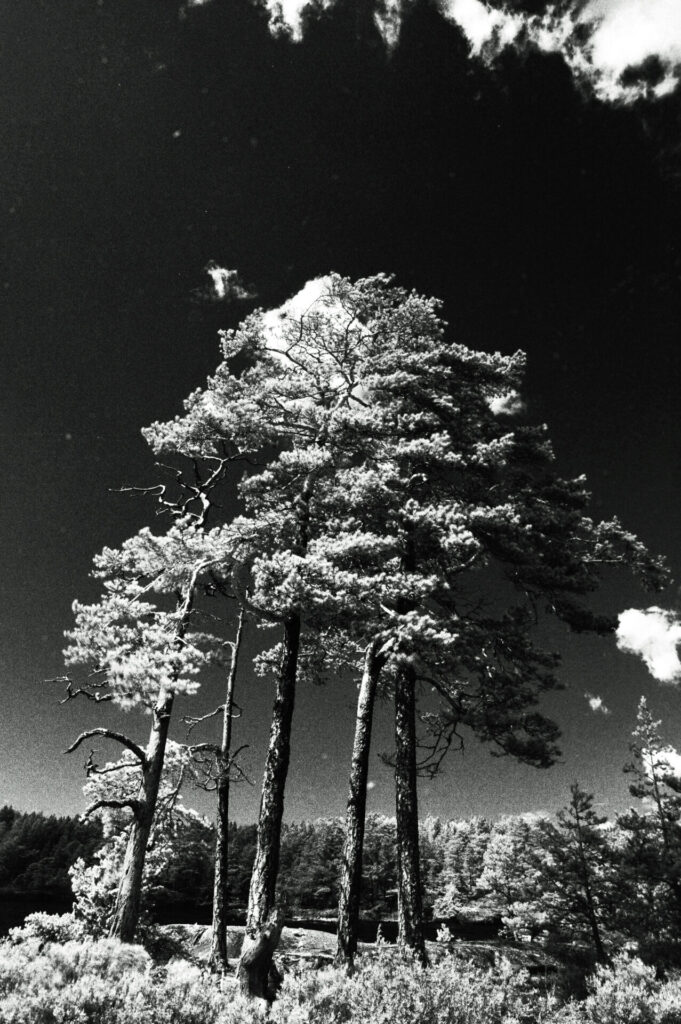Finally it is summer and this is just the perfect time to do Infrared Photography, and capture the world of infrared light with analog black and white film. Infrared photography delivers exciting results… Water and sky becomes almost black, clouds and leafs almost white, giving an impression of an surrealistic image from another planet. In this post I write about my first experiences of this unique part of analog photography.
Infrared Film
As most of us knows from school, the human eye only can see portion of the electromagnetic light spectrum with wavelenght from 400 up to 740 nanno meter. The range of infrared light just starts above 740 nm. For infrared photopraphy there are special films available which are able to capture the infrared light. I decided to test the Ilford SFX-200 film, here you can download the datasheet – Ilford SFX 200. The spectral sensitivity graph of SFX 200 shows a high sensitivity up to 740 nm and then the sensetivity quickly drops down around 780 nm. So for me it is a superpanchormatic film and I am excited to test it with deep red and infrared filters.
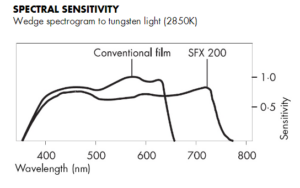

Infrared Filter
Making infrared photography requires a deep red or best infrared filter. The infrared filter blends out the light with wavelength below the infrared spectrum. For my photographs I used Hoya’s Infrared filter R72 – here you can download the datasheet – Hoya Filter IR 72. The filter blocks all light with wavelength below 740 nm, so it just let pass infrared light.
I suppose that a deep dark red filter also will give interesting results, unfortunately I have not yet tested this, this will be a future challange.
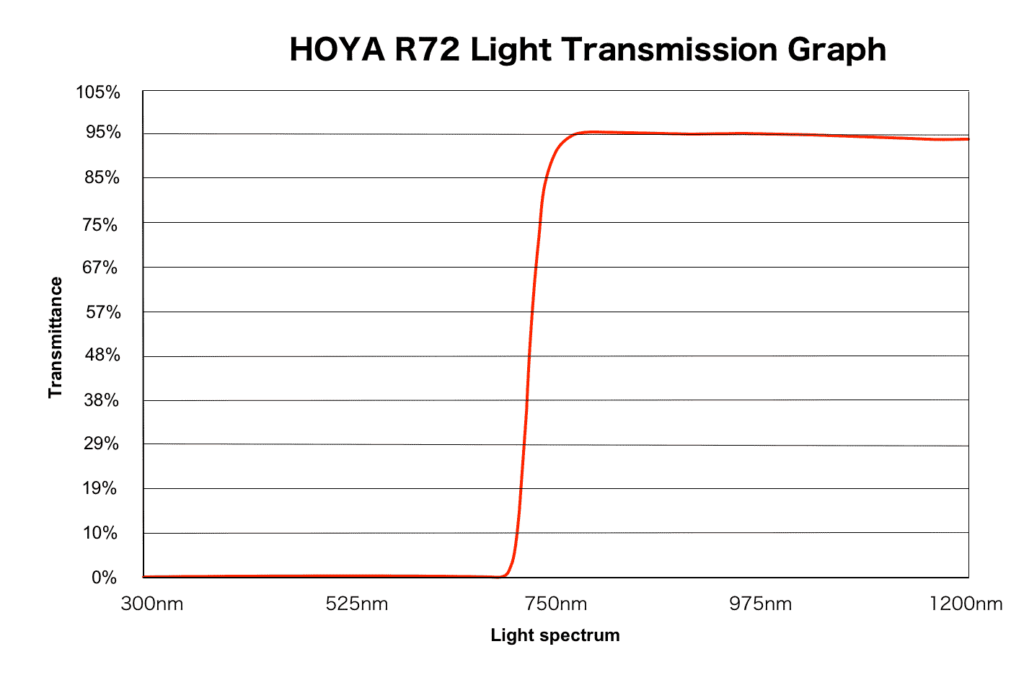
Shooting Infrared
I found that best results can be archieved in bright sunlight and deep blue skies and white clouds. Optimum is to have the sun behind you and the subject or landscape to photograph is fully exposed by sunlight. I found out, that infrared photography with cloudy weather does not work very well, the photographs become more or less just boring and grey.
The infrared filter is so deep dark red, that no visible light will pass, therefore you cannot using the exposure measurement of you camera or focus with the filter attached. First I had to find out what what exposure time the film requires with the infrared filter. In the specification Hoya states a EV correction of 14 2/3 stops. To transfer the correction into exposure stops take log(14 2/3)/log(2) which is approximately 4 stops. As the Ilford SFX-200 already has half of light sensitivity for 740 nm, I added another stop to have correct exposure, which makes it a 5 stop correction.
As equippment I used Mamiya 645 Pro with 35 mm prime and 50 mm shift lens, both have 77 mm filter thread. Focus an object is only possible without the infrared filter. Don’t forget to align the found optical focus to the red line on the lens. Surely it is possible to use the light meter of the camera, but I found it easier to use a manual light meter. Thereafter I put the filter onto the lens, adjusted aperature manually to 16 or 22 and added the 5 stops to make my exposures. In bright sunlight my exposure times dependend on aperature were between 1/4 to 1 second. Due to this longer exposure times I make all photographs by using a tripod.
Photographed Negatives
I developed the Ilford SFX-200 with Ilford’s ID 11 which worked perfectly. Thereafter I photographed the negatives with a Sony A7 and a minolta bellow attached with a Schneider Componen 50mm.
Overall I find that the combination of Ilords SFX-200 and the Hoya R72 works very good. It will be very exciting to do further photographs and also to test other infrared films like for example the Rollei Infrared 400.
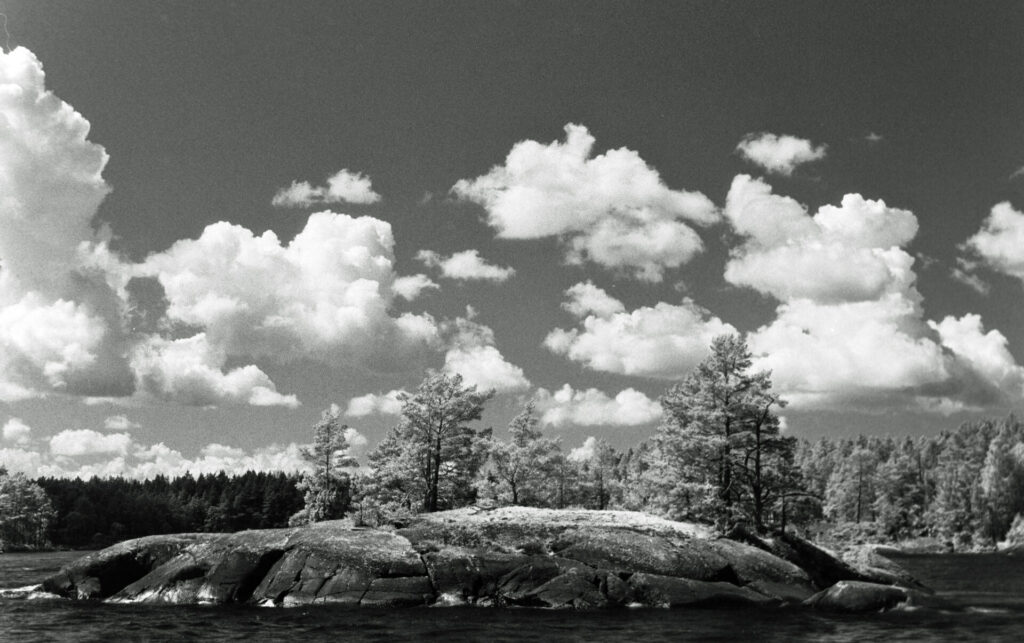
Printed Photographs
For the enlargements I work with a Durst Laborator 1000. The phots were taken by my Mamiya 645 Pro in medium format and printed on Ilford Photopaper 30×40 cm. For the first enlargment I used Ilford constrast filter size 1 and exposed 12 seconds. I photographed the enlargement then with an Iphone in daylight 🙂
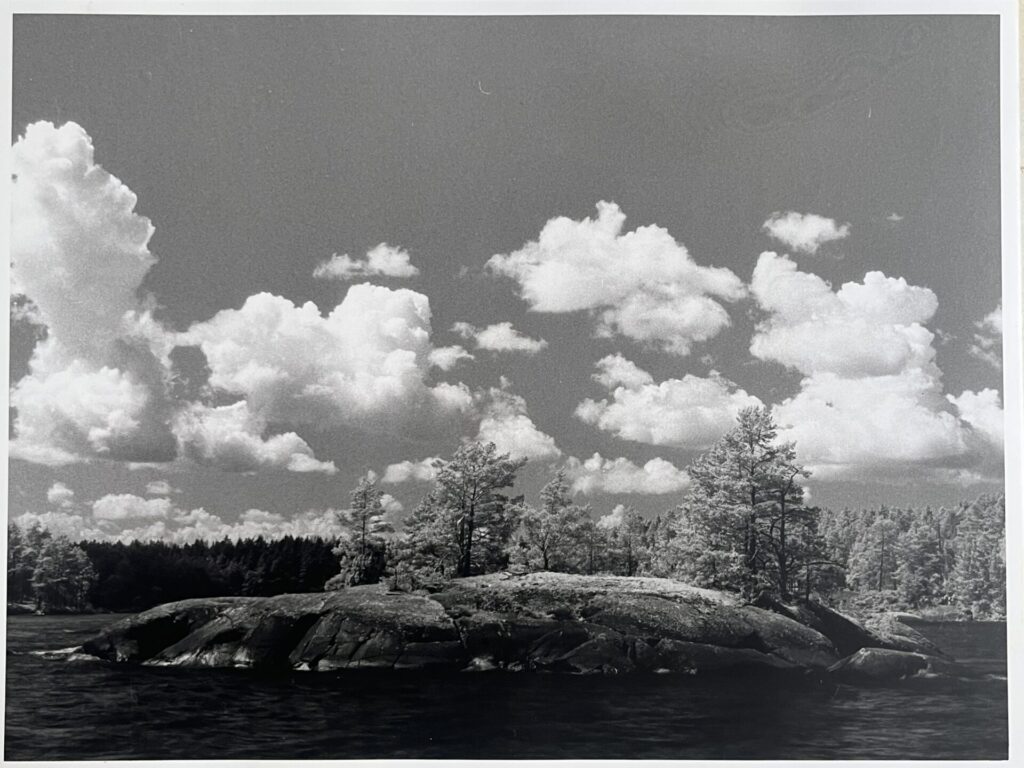
For the second enlargement I chose a contrast filter size 4 and exposed 20 seconds. The final result is a bit dark, I like it as it has such an dramatic look. Quite extreme how it shifts from black to white.
In the end I am very glad about the results and looking forward to do more photographs with Ilford SFX-200 and also to test other films.
